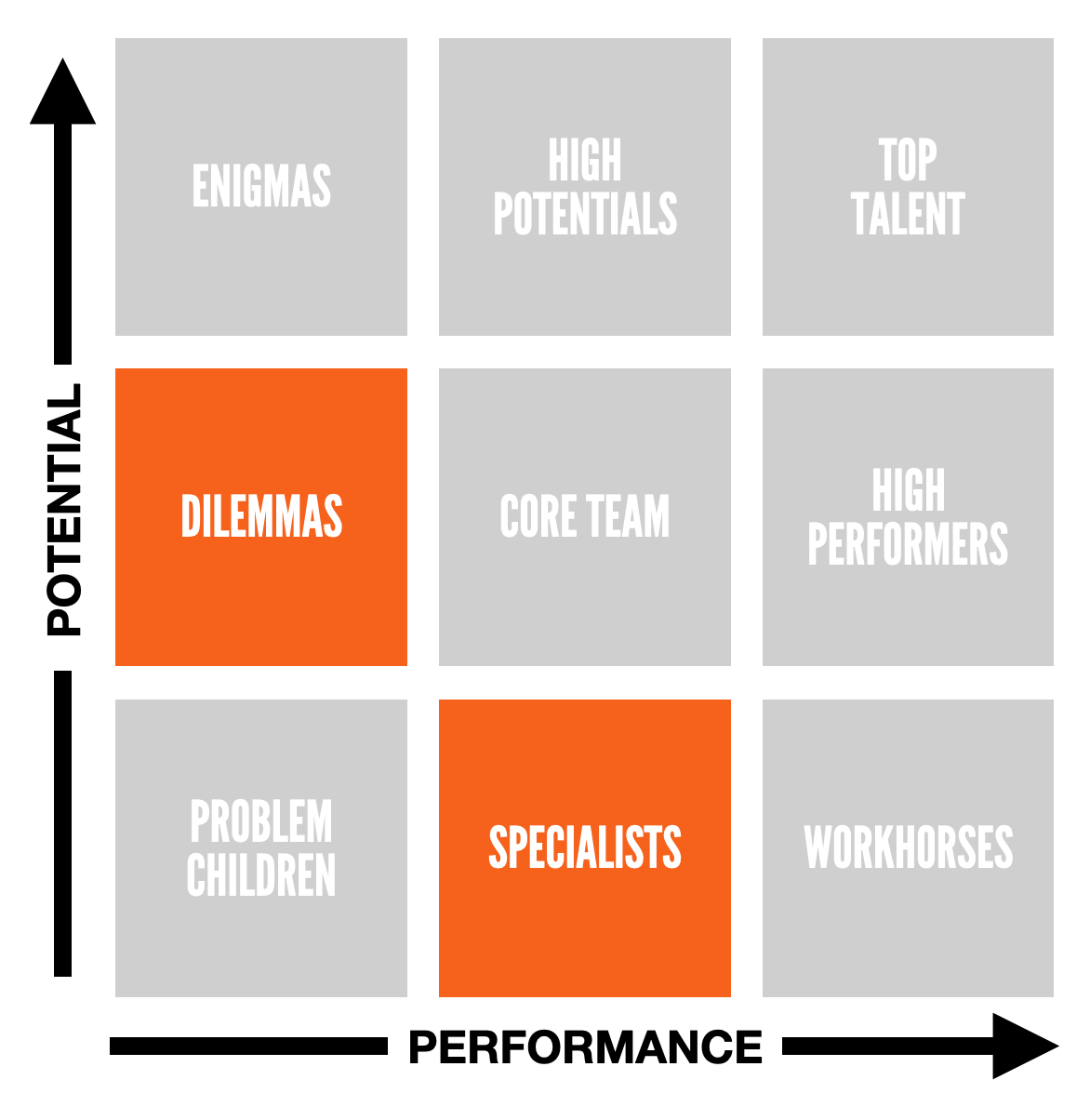Tool #2 - The Nine Box Grid
This week, let’s focus on a great talent management tool - the 9-Box Grid.
Summary:
It is a grid-based assessment tool used to evaluate employees' performance levels and potential for growth to fit them into each of these 9 areas.
History:
Developed and used by many consulting firms, it’s a mainstay of many HR departments to quantify and compartmentalize large swaths of employees. For that purpose, it’s a bit outdated.
Applications:
For our purposes, it’s a great snapshot to get a better understanding of where each member of your team is and where they need to go. Our job is to do less formal quantification and more informal qualification with each team member — we’re looking at 9-10 employee teams, not 90-100. Let’s review each box:
Top Talent (1 box, green) — These are your stars, your right-hand people who never fail you and frequently impress you. They are your future leaders who will ultimately push you upwards into another role or move into their own group.
ACTION PLAN: Massively delegate your responsibilities to them, give them management spots to coach associates under them, and most of all, encourage them to mentor many of the other areas to ensure they see the light. These are the people you point to during team meetings to acknowledge their frequent positive contributions to your success.
High Potentials & High Performers (2 boxes, blue) — These are your future stars — they have the potential to move into the Top Talent spot within the next six months with the right mentoring and instruction.
ACTION PLAN: Give them ever-increasing responsibilities, slowly drawing back the management curtain and showing them high-exposure opportunities and insight. You want the high-potentials to perform better and the high-performers to develop their potential — so that means one-on-one coaching from you and your top talent people. In the future, these two areas will play a major role in succession management.
Core Team (1 box, navy): These are your average performers — and the ones who need a real push to move into the upper-right areas of your grid. Why? Because if you orphan them and let them go off on their own, sometimes they move to the lower-left areas and cause future issues.
ACTION PLAN: They need TLC — attention, important responsibilities, longer-term projects, and most of all, acknowledgment.
Enigmas & Workhorses (2 boxes, gray): These two areas are the hardest to deal with because they are either very high in potential or performance — so it makes it hard for you to communicate their faults — they will counter with reasons why they are good at what they do. I find Engimas easier to deal with — they have incredible potential (smarts, knowledge, experience), but for some reason, they just aren’t delivering anything of substance. They usually think of themselves as geniuses, but their own ego shunts their performance. Workhorses are a totally different animal — they deliver the goods, but they’ve sacrificed their potential for growth with a base knowledge to perform. These people are your ‘workhorses’ and might never rise above their grade level.
ACTION PLAN: Enigmas — You need to micro-manage their performance incrementally and show them that you won’t go away until they start delivering. Being knowledgeable about your role is just one dimension — they need to perform. Workhorses — You need to find out why they are so good at their role at the expense of growing future potential. Are they afraid of success? Do they just want to be left alone and allowed to work in their private niche forever?
Dilemmas & Specialists (2 boxes, orange): Dilemmas have average potential, but their performance is lacking — they are either slacking or lost. Specialists are really good at what they do but are solely focused on a specific area that might be static or dying (this happens frequently in IT and Finance).
ACTION PLAN: Dilemmas — You have two choices, take one last chance and have one of your top performers mentor and get them out of the woods, put them on a PIP to jolt their system into action, or farm them out. Specialists — their potential for growth is lacking (or non-existent), so you need to give them a clear mandate that either they start to venture out into new vistas or you’ll have to PIP them to recognize they have to move up to survive.
Problem Children (1 box, red): These are employees who are low on performance and potential. There are many different names for them, including talent risk, bad hire, underperformer, and iceberg. They do just enough to stay under your radar, but ultimately, they are hurting you and your team. Odds are they are disrespecting you behind your back, push back often during meetings, and yet they feel invulnerable.
ACTION PLAN: I’ve seen this many times — I would immediately put them on a 30-day performance improvement plan (PIP) and replace them immediately (unless they have real potential).
Action:
Print out the grid and mark your people in or around each box (sometimes people are never just one area). This will give you a roadmap on what to do with each team member’s future. Enjoy!







